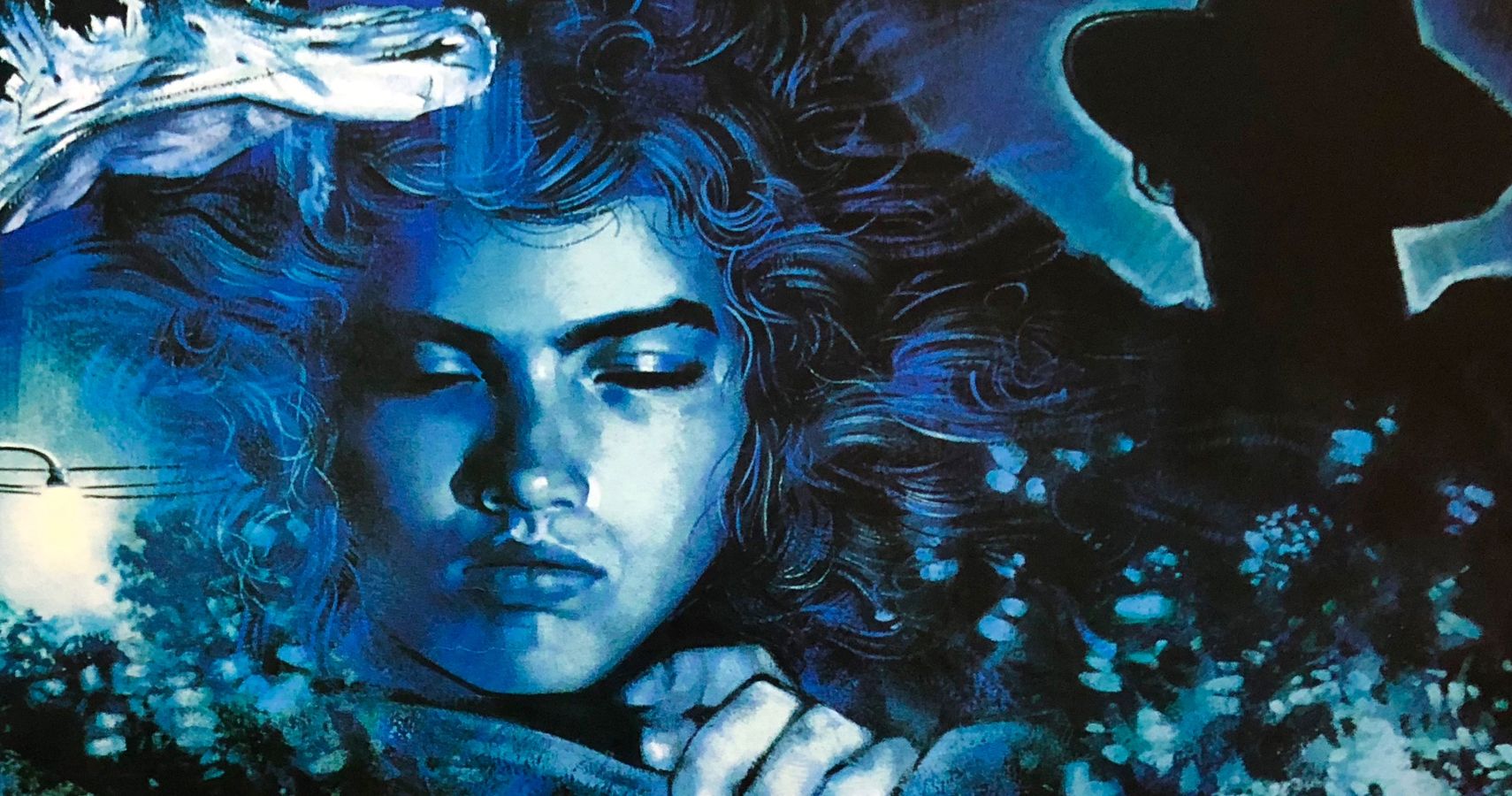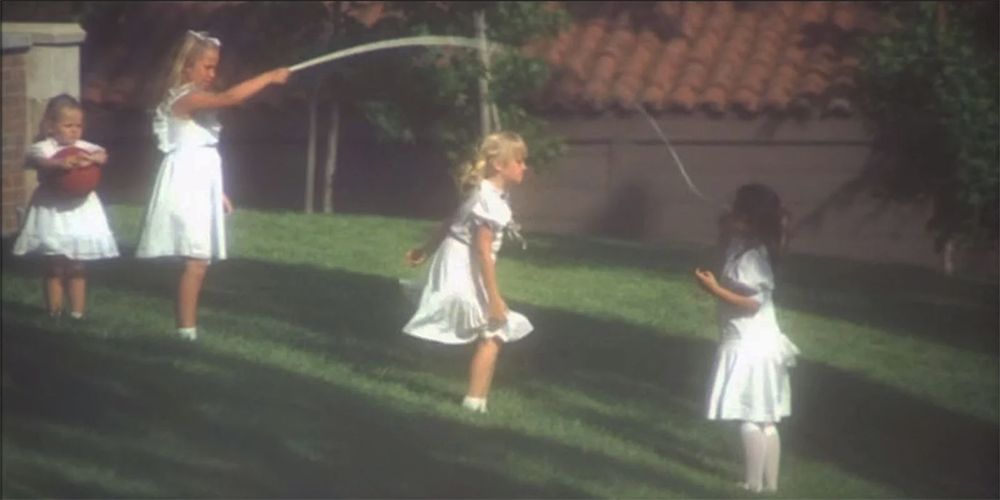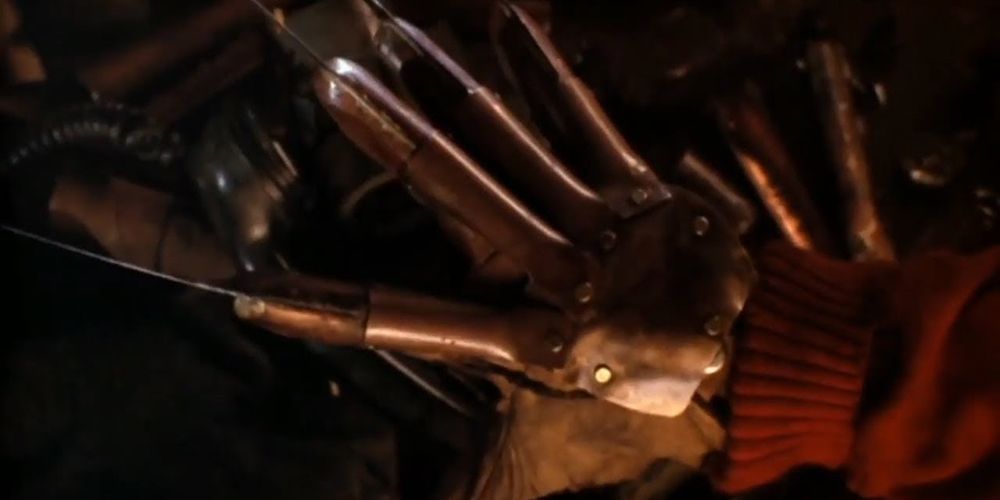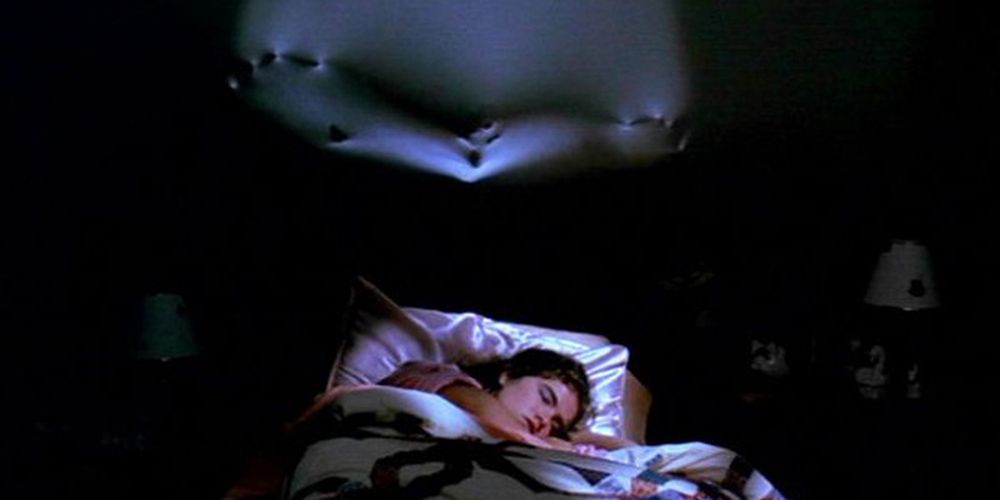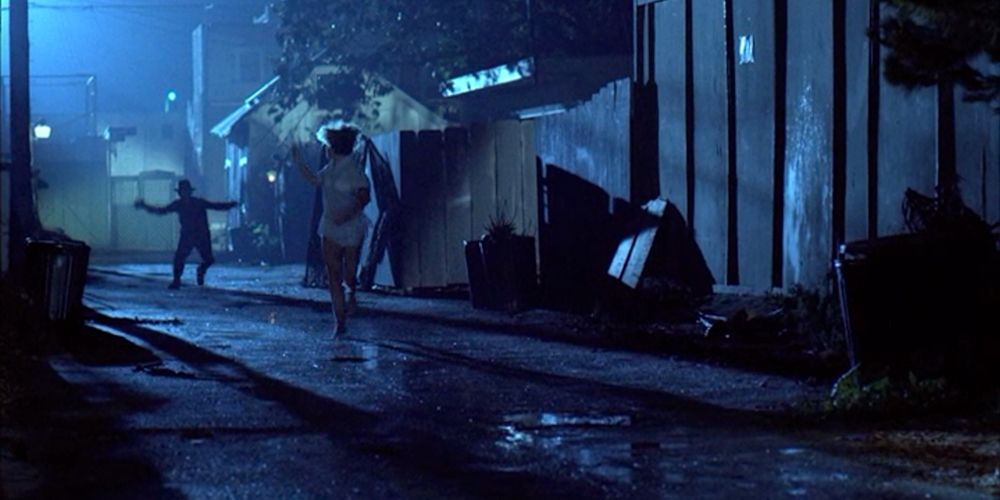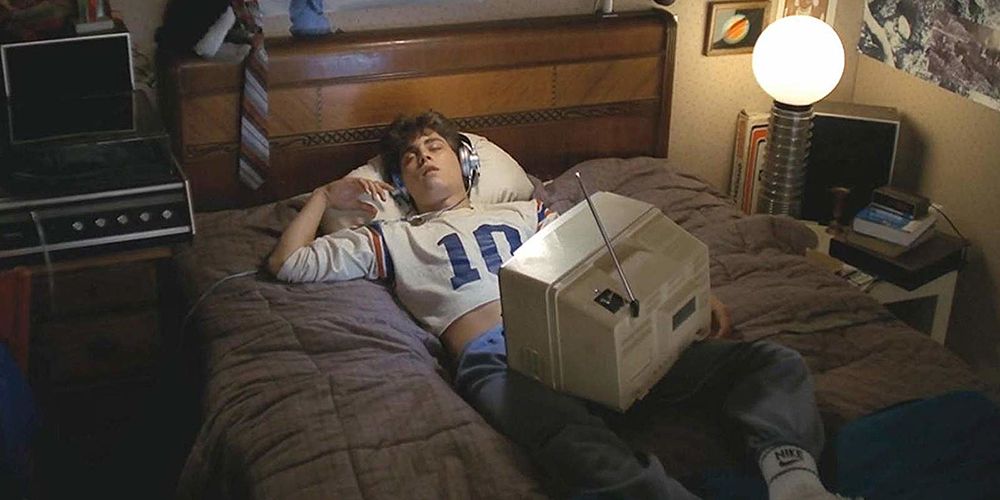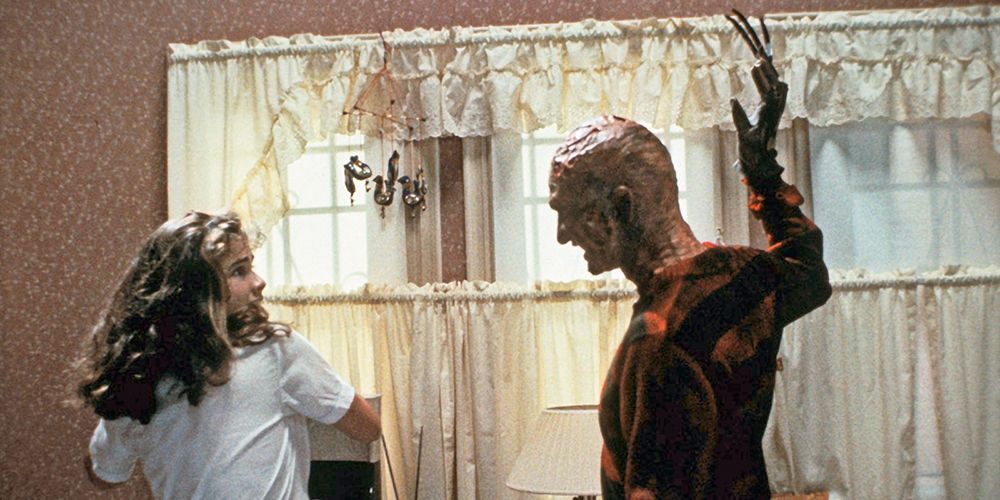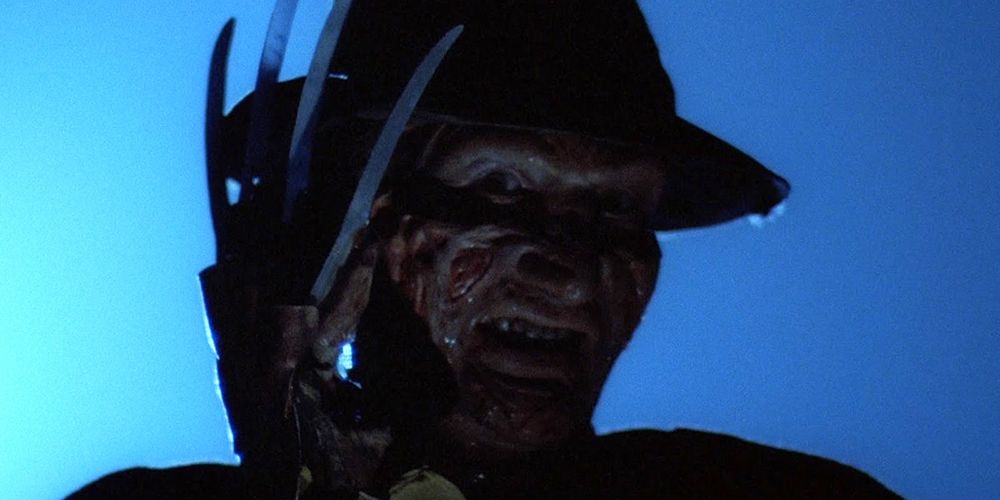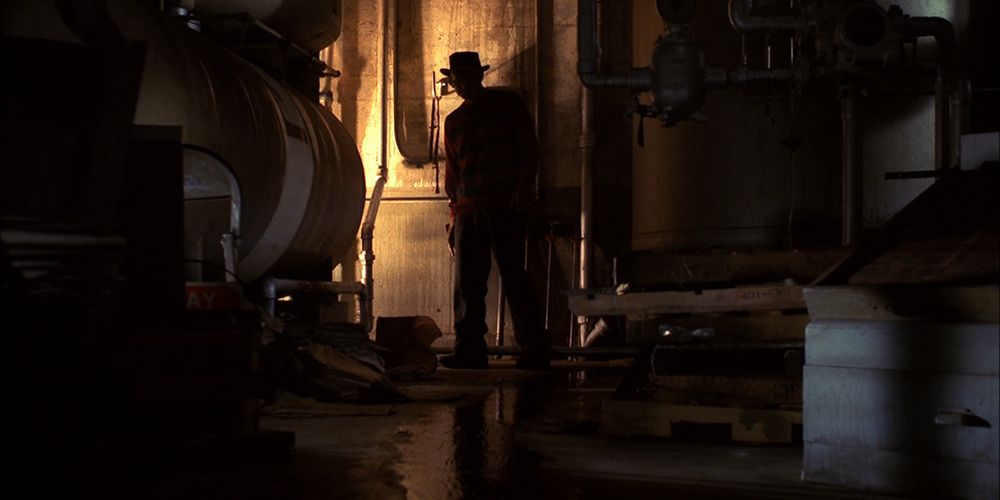Filmmaker Wes Craven unleashed possibly his most renowned film in 1984. The horror genre was introduced to A Nightmare On Elm Street along with a newfound slasher, Freddy Krueger. The film's success was responsible for putting film studio, New Line Cinema, on the map.
A Nightmare On Elm Street managed to sink its claws into audiences and kept them guzzling coffee for the sake of staying awake...and alive. For a generation, Freddy Krueger plagued the nightmares of children, teenagers, and even adults. The film contained horrific resonance and brutal innovation that has helped it stand the test of time.
Introduction To Johnny Depp
Supporting roles could be taken as forgettable performances or chances to showcase talent. A Nightmare On Elm Street introduced audiences to Johnny Depp. Wes Craven (along with the interest from his daughters) gave Johnny Depp an opportunity to establish himself as an actor. The role of Glen Lantz, Nancy's boyfriend, was portrayed by Johnny Depp. The film's eruption of success opened doors for Johnny Depp in an array of platforms. These new gigs included the television series 21 Jump Street, Oliver Stone's Platoon, and John Waters' Cry-Baby. Johnny Depp's career was indebted to a small, independent horror film and a stripe-sweatered serial killer.
One, Two...
A Nightmare On Elm Street revolved around the Springwood legend, Freddy Krueger. His character could be summed up by the infamous trio of little girls skipping rope. As they skipped, an eerie nursery rhyme uttered from their lips as a distant warning to Freddy Krueger's haunting presence. Freddy Krueger was a child predator and murderer that evolved into the monstrous myth known as "The Springwood Slasher." This gave the film a local and community vibe. Audiences realized and collapsed into fear. A Freddy Krueger could be in their neighborhood. Adhere to the children's forewarning.
Weapon Construction
Every slasher villain utilized their signature weapon. Jason Voorhees swung a machete at camp counselors. Michael Myers stalked babysitters with a butcher knife. Leatherface revved up a chainsaw and chased outsiders in desolate Texas. Freddy Krueger administered a much more unique weapon to conduct his supernatural murderous spree.
The opening credits to A Nightmare On Elm Street established and showcased the construction of Freddy Krueger's clawed glove. This "home-made" opening induced the audience into Krueger's disgusting world and disturbed mind. Freddy sadistically relished in the misery of his victims. He was beyond a regular slasher villain.
Bedroom Wall
Aforementioned, Freddy Krueger was beyond a regular slasher villain. That could be taken figuratively and literally. Freddy Krueger's fear-inducing power did not spawn from his clawed glove. It oozed from his supernatural ability to invade people's dreams. An iconic moment in regard to this power was the bedroom wall scene. As Nancy Thompson slumbered upon a bed, Freddy Krueger pushed through the bedroom wall, hovered above her like a melting specter, and knocked over her crucifix. Clever lighting and a stretched spandex sheet allowed this effect to make a massive impact and lasting moment in the film.
Tina's Death
Possibly the most iconic murder in the film was the death of Tina Gray. Her demise initiated the film's inciting incident. It also brutally introduced who Freddy Krueger was and what he could do. Tina was bladed in her sleep, she was swung like a ragdoll throughout her bedroom, and she was violently hauled onto the ceiling. All this was done by an invisible assailant in reality, but, in her dreams, by Freddy Krueger. Audiences received a taste of what was to come along with foreshadowing Wes Craven's Scream franchise. Tina Gray was the predecessor to Casey Becker as the archetype to the "fake-out survivor-woman".
Glen's Death
The death of Glen Lantz summed up the film in a gloriously gory murder. "Do not fall asleep. If you fall asleep, you die." Slumber was no character's vigor. It was their downfall.
Glen Lantz died in the safety of his own bed. Freddy's clawed glove shredded through the mattress and dragged Glen into it. His blood erupted from the bed like a crimson geyser. Audiences felt that being home in bed and under the covers was their safe haven. A Nightmare On Elm Street made that Freddy Krueger's hellacious playground.
Nancy Vs. Freddy
Nancy Thompson took the reins as the protagonist after the death of her friend, Tina Gray. Her determination and resiliency pushed her into the game of survival against a paranormal antagonist. Nancy controlled the situation and uncovered the identity of Fred Krueger. This instituted a much more personal war between her and Freddy Krueger. Nancy wanted to avenge the deaths of her friends and she was not going to be denied. "This is just a dream. He isn't real," stated Nancy during her celestial battle with Krueger. She wrestled with her family's trust and her own sanity. "I really am crazy," Nancy questioned herself until she discovered Krueger's reality-bending abilities.
Sins Of The Father
A Nightmare On Elm Street presented the notion of children paying the debts of their parents' actions. This idea was one that could be absorbed on an allegorical level as well as a literal level. For a fact, Freddy Krueger was a child predator and murderer. A faulty judicial system along with a minuscule mistake within the due process, saw Freddy Krueger freed from his homicidal charges. Springwood residents on Elm Street took the law into their own hands by torching Freddy Krueger alive. Justice was crisply served. However, the nightmare had begun for the children of Elm Street, who became Freddy Krueger's targets from beyond the grave.
Freddy Krueger
A film could only be as good as its antagonist. Robert Englund showcased a franchise sparking performance that haunted audiences for decades. A Nightmare On Elm Street spawned a newfound slasher that joined the ranks of Jason Voorhees, Michael Myers, and Leatherface. The stark difference between Freddy Krueger and his peers was literally his voice.
Robert Englund gave Freddy Krueger a sickening personality along with a soul-stirring vocalization. This slasher's victims succumbed to a much more cerebral demise at the glove of an innovative, fear-inducing boogeyman. All the while, audiences heard him bask in the pleasure of committing this bloodthirsty destruction.
The Concept
The notion of someone killing a person in their sleep was truly a terrifying idea. A person in slumber showcased the ultimate and inevitable vulnerability. Helplessness. Adding the idea that the murderer lurked within your dreams was what put the concept over the edge. Wes Craven struck a nerve with A Nightmare On Elm Street in 1984. The battleground of a dream contained an endless palette for conflict. The psyches of audience members itched with scenarios of how they would fend off such an assailant...or if they could. Circles under eyes darkened, coffee sales skyrocketed, and both sides of pillows remained chilled. All this could be accredited to Wes Craven's A Nightmare On Elm Street.

